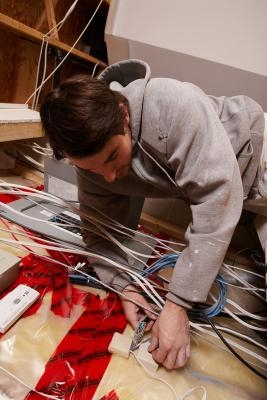
A diode acts like a one-way valve for electricity. Connect the diode in one direction and current will flow through the diode. Connect the diode in the opposite direction and it will block the current. A diode has two connections points, the anode and the cathode. The cathode terminal on the diode is marked with a stripe; the anode has no stripe. A properly connected diode will allow current to flow from the anode to the cathode. This will allow the device attached to it to operate or, if the diode is an LED, or Light Emitting Diode, it will be able to light.
Turn the power off to the circuit that will receive the diode. Cut the wire where the diode will be installed. Slide a 2-inch piece of heat-shrink tubing over the cut wire. Strip 1/2 an inch of insulation from both ends of the wire. Turn the power back on. Use a digital voltmeter to measure the voltage from each end of the stripped wires to ground. Place the positive probe (red) on the wire and place the black probe on ground. Note the voltage of each wire. Mark the wire with the higher voltage.
Connect the anode to the wire with the higher voltage. Wrap the exposed copper around the anode terminal. Place the soldering iron wire on the wire connection point. Touch the solder to the solder connection point. Keep feeding solder into the connection point until it wicks into the wire. Remove the soldering iron.
Connect the cathode to the other piece of wire. After the two connection points have cooled, slide the heat shrink tubing over the exposed wire and connection points. Use a hot-air gun to shrink the tubing around the diode and splice points. Allow the heat shrink tubing to cool.